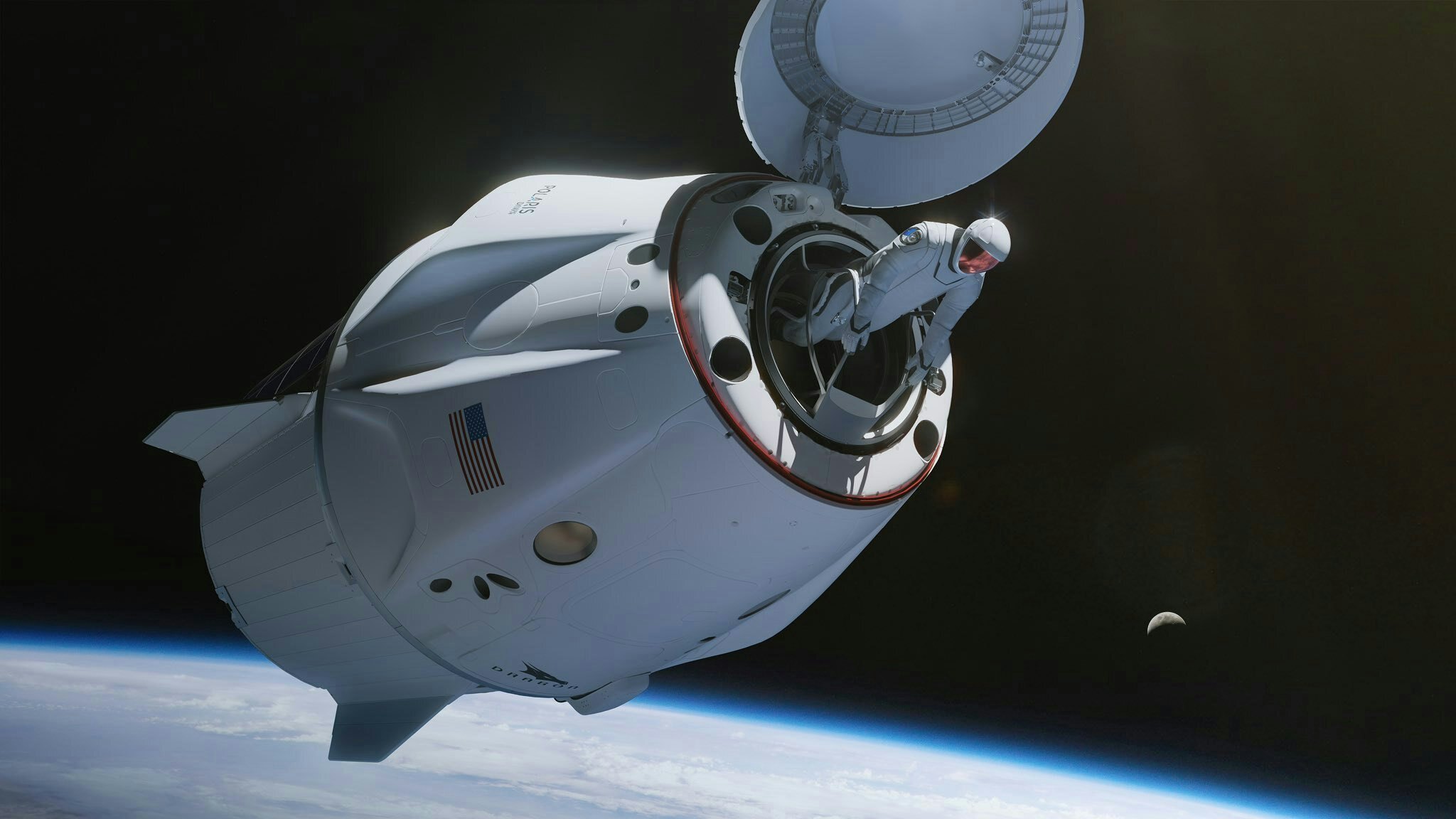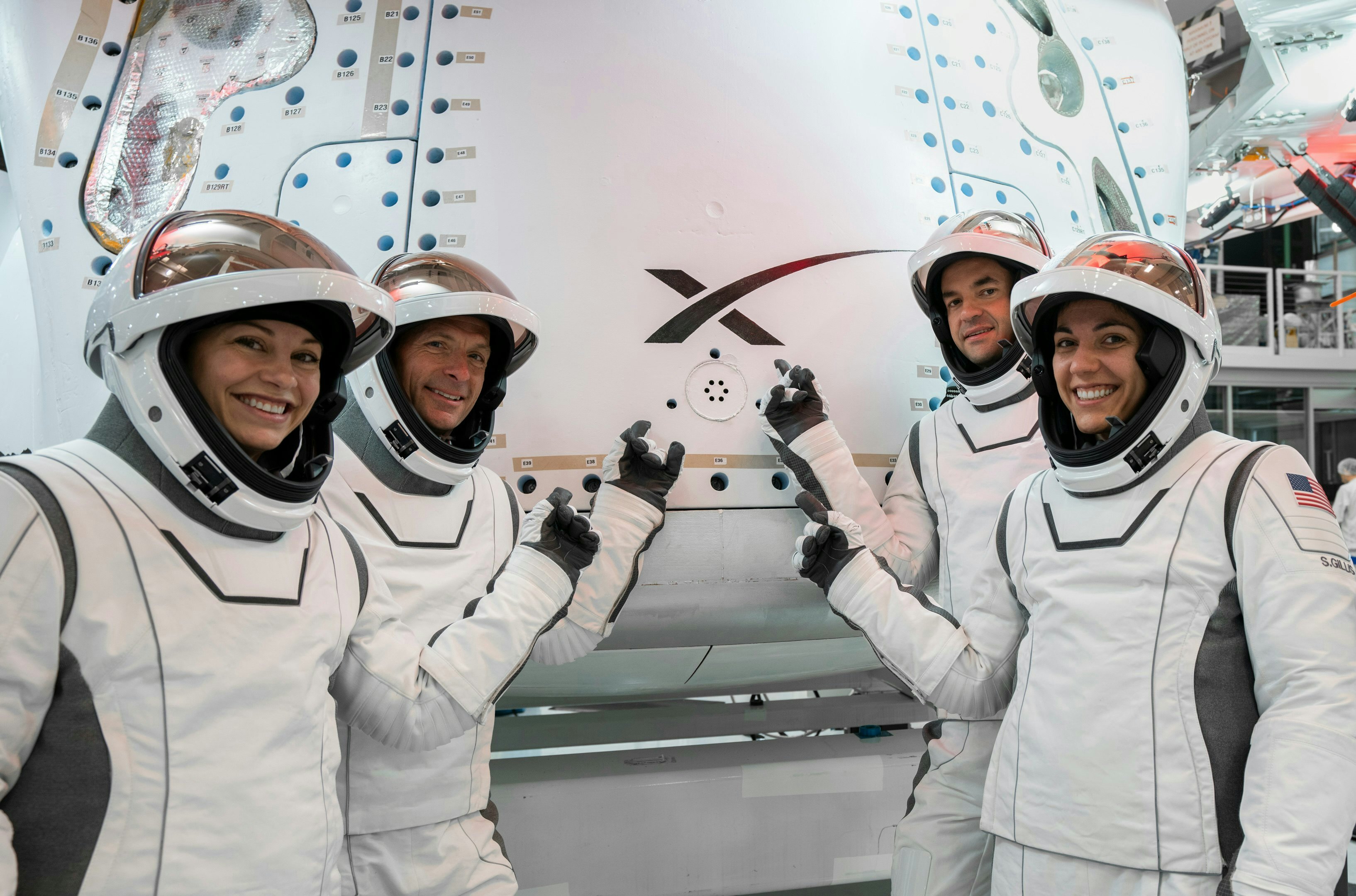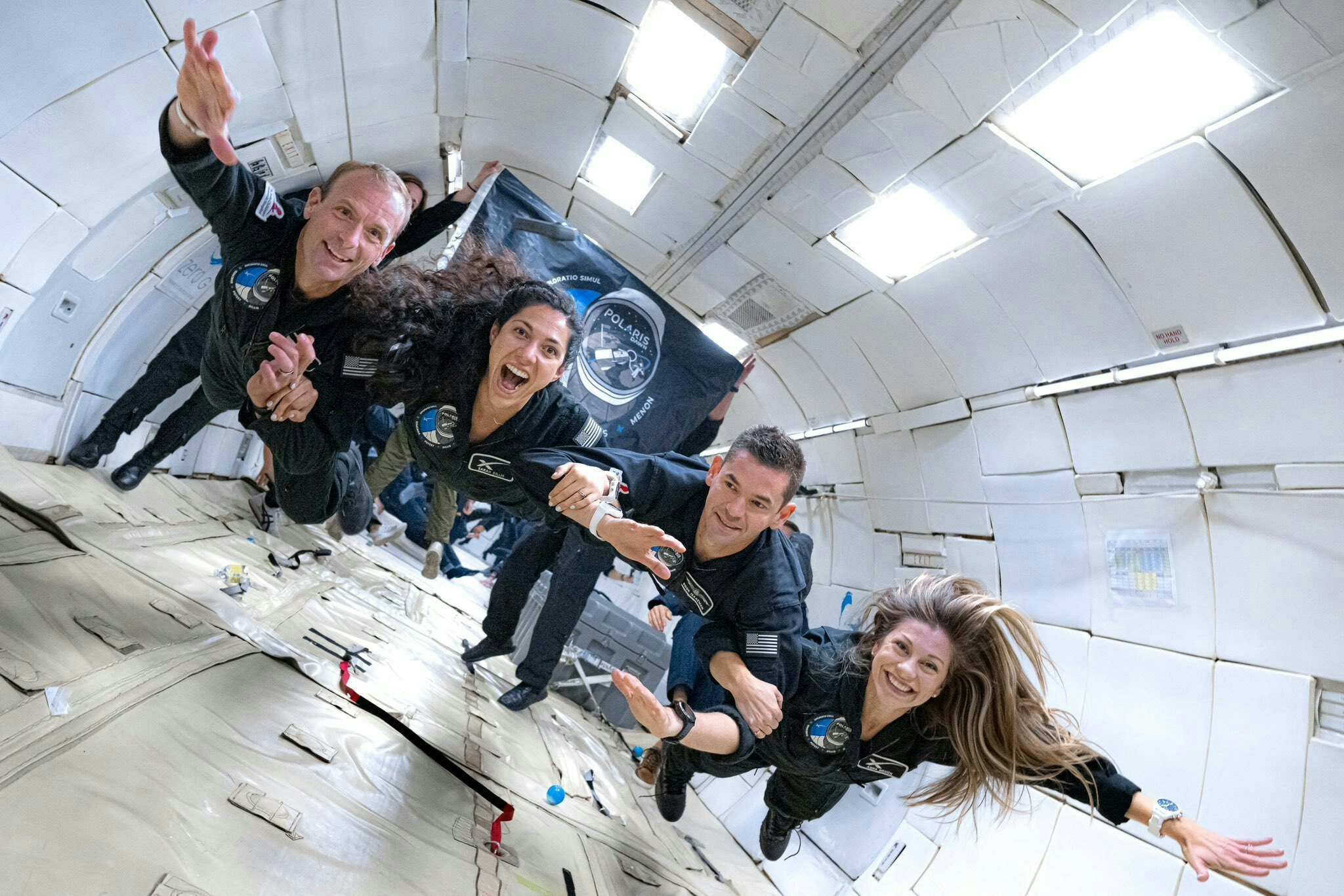
Polaris Dawn will launch on Monday, and the private space mission will do some ambitious and risky things.
In a time when we regularly see multiple commercial spacecraft docked at the ISS at the same time, it can be a little tough for any particular private space mission to stand out — but Polaris Dawn, a collaboration between SpaceX and Shift4 CEO Jared Isaacman, will be one to watch.
The mission is scheduled to launch Monday, August 26 from Kennedy Space Center, sending four astronauts in a SpaceX Crew Dragon capsule (like the one the stranded Starliner crew will ride home in) on a long, narrow orbit that will carry them through the innermost of the Van Allen belts — bands of high-energy radiation that surround our planet — making them the first people to cross the belts in 52 years. Midway through the 5-day mission, two crew members will leave the capsule for the first spacewalk by private astronauts.
Those plans might look like more space billionaire stunts — this is also the age of space tourism, after all — but Isaacman (who will fly on Polaris Dawn as the mission’s commander) insists the Polaris program has real science and technology development goals.

Polaris Dawn Will Test SpaceX’s New EVA Suits
One goal of the Polaris Dawn mission is to test new technology for deep space travel. The mission will be the first flight test of SpaceX’s new pressure suits for extravehicular activities (EVAs), such as spacewalks. Isaacman and mission specialist Sarah Gillis are about to become the first non-government-employed astronauts to ever attempt a spacewalk, but they’re also about to depressurize their spacecraft, open the door, and step outside while wearing spacesuits that have never flown before.
The design is meant to be lighter and more maneuverable than the ones currently in use, and the helmet comes with a heads-up display that shows a mission clock alongside the suit’s pressure, temperature, and humidity. At the moment, neither NASA’s spacesuits nor SpaceX’s current generation “intervehicular activity” (IVA) suits have the heads-up display. Both the IVA suits and the new EVA suits are much less bulky than NASA’s version, but Isaacman and SpaceX claim the EVA suits flying on Polaris Dawn offer more mobility at the joints, and they’re also easier to get into and out of.
SpaceX previously took the new suits to White Sands Missile Range in New Mexico to fire tiny projectiles at them at thousands of miles an hour, arguably the most direct way to test whether the suits could endure strikes from micrometeorites or other tiny bits of orbital debris. Next week’s mission will be their first flight test — and since the mission calls for opening up the whole Crew Dragon cabin to the vacuum of space before Isaacman and Gillis venture outside, it will be a high-stakes test, and it carries more than the usual amount of risk that comes with flying to space.
The four astronauts will also test communications systems using laser links between the Crew Dragon capsule and SpaceX’s (increasingly problematic) constellation of StarLink satellites in low Earth orbit.

What Will Happen During Polaris Dawn’s Spacewalk?
While the spacesuits are very new and Polaris Dawn’s crew are about to be the first non-space-agency astronauts to ever attempt a spacewalk, the method they’ll be using for this test is extremely old-school. The Polaris Dawn spacewalk is going to look almost exactly like the very first American spacewalk back in 1965, except with twice the number of people and much sleeker spacesuits.
Astronauts aboard the International Space Station will breathe pure oxygen for about two hours before a spacewalk, then step into an airlock (a separate room that air can be let in and out of) and then into the vast vacuum of space — leaving the rest of the space station safely sealed and pressurized behind them. But the Crew Dragon capsule doesn’t have an airlock, just a main hatch, so in order to walk in space, the crew will have to open the hatch and expose the whole cabin to vacuum.
Isaacman and Gillis will float out the hatch, tethered to the capsule by umbilical cables that provide life support and keep them tethered to the ship. Pilot Scott Poteet and mission specialist and medical officer Anna Menon will be strapped into their seats, managing the umbilicals and the ship’s systems — but all four of them will be exposed to the unforgiving forces of vacuum, with nothing but their suits and open hatchway between them and eternity. That’s exactly how the crew of Gemini 4 — pilot Edward White and commander James McDivitt — did it 59 years ago, when White became the first American spacewalker.
Spacesuits keep astronauts’ bodies under enough air pressure to survive and function, but the pressure inside an EVA suit will still be very low compared to the normal air pressure in the room you’re sitting in now, or in the Crew Dragon’s cabin.
That’s why astronauts on the ISS spend a couple of hours “pre-breathing” oxygen before an EVA. The goal is to make sure there’s no nitrogen in their bloodstream, so they can avoid a painful and often fatal condition called decompression sickness (DCS), or the bends. Normal air is 78 percent nitrogen, which ends up in our bloodstream when we breathe. That’s not a problem, unless our bodies are suddenly under much lower pressure than normal. Then, it quickly becomes a big problem because all the nitrogen gas mixed with our blood comes fizzing out, like the bubbles in soda bottles when you take the lids off too quickly.
Polaris Dawn’s crew will spend a lot more time pre-breathing. They’ll start as soon as they reach orbit, and for the next two days, they’ll gradually turn the cabin pressure down and the oxygen concentration up. That will force the nitrogen out of their bodies even as they’re adjusting to lower pressure. By day 3, it will be time to open the hatch and hope it worked.

Medical Research in Space
Exploring how the human body responds to the physical weirdness of being in space — changing air pressure, microgravity, and radiation exposure — is another key goal of the Polaris Dawn mission (and pretty much every crewed mission, on some level). During their 5 days in orbit, the crew will gather data for more than 30 experiments on the human body.
When it launches, the Crew Dragon capsule will be carrying samples of human tissues and cells, which researchers at Baylor College of Medicine and Embry-Riddle Aeronautical University will compare with their “BioBank” samples here on Earth. The goal is to learn how deep space affects the tissues that make up the human body on a microscopic level, looking for changes on the cellular level.
Other experiments will study bone and muscle loss in microgravity — and test a couple of possible methods to track and prevent them. Still other experiments will study changes to astronauts’ vision, which are believed to be caused by changes in the amount of fluid in astronauts’ heads during spaceflight. The crew will measure the pressure on their eyes with portable ultrasound instruments, tiny sensors in contact lenses, and small cameras that measure the size of astronauts’ pupils.
A couple of other experiments are focused on how exposure to microgravity and cosmic radiation impacts medicines; a NASA study will track whether there are any physical or chemical changes to medicines stored on the Crew Dragon capsule during the flight, while a UTHealth Houston study will measure blood flow in the astronauts’ liver and kidneys (again with portable ultrasound devices) to build digital models of how the human body might process medicines taken during a space flight.
Meanwhile, NASA will be testing a nasal spray for space sickness, a type of motion sickness that happens to people in space. All of these tests will hopefully get us all one step closer to feeling safer and healthier in space.







